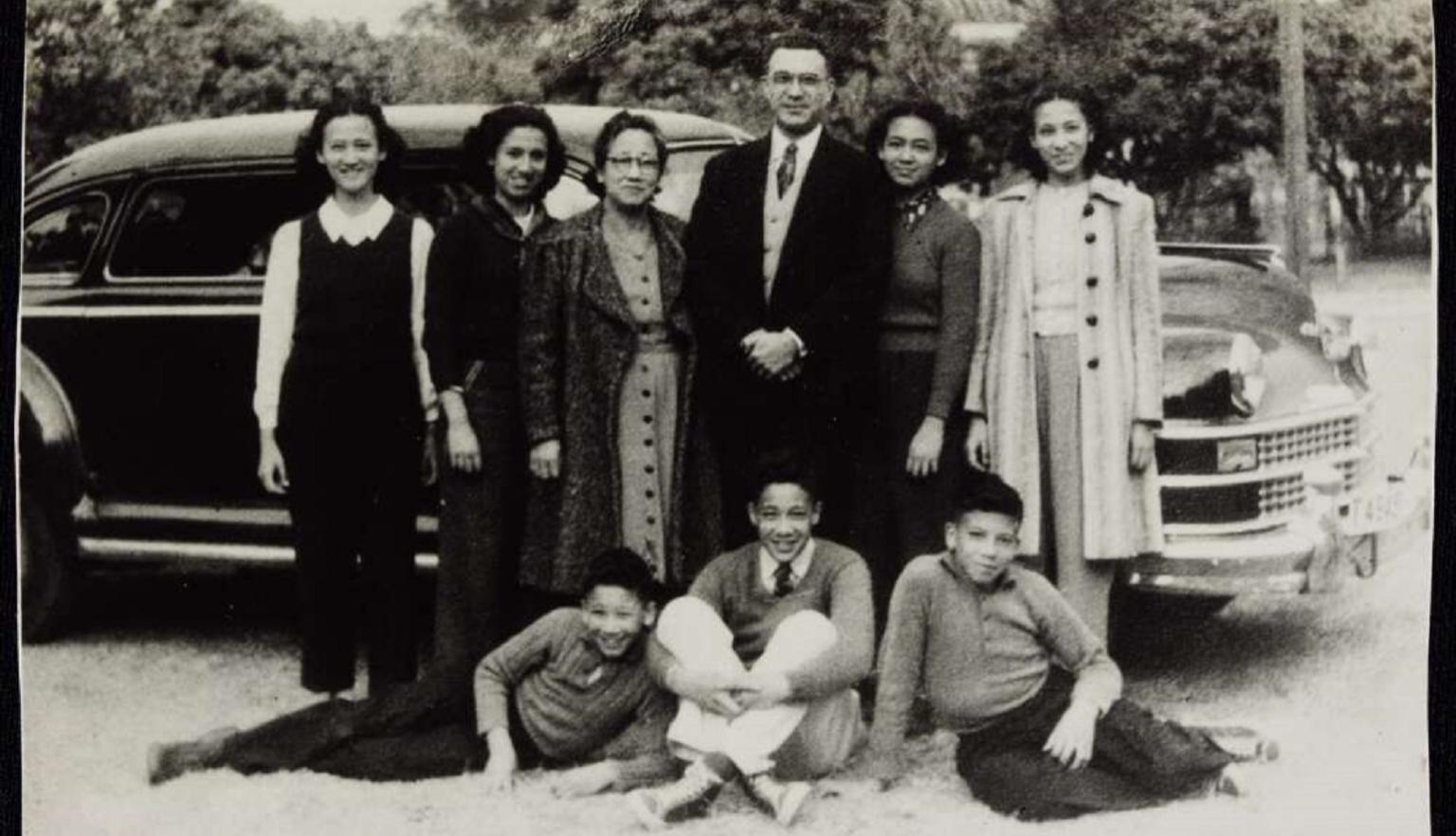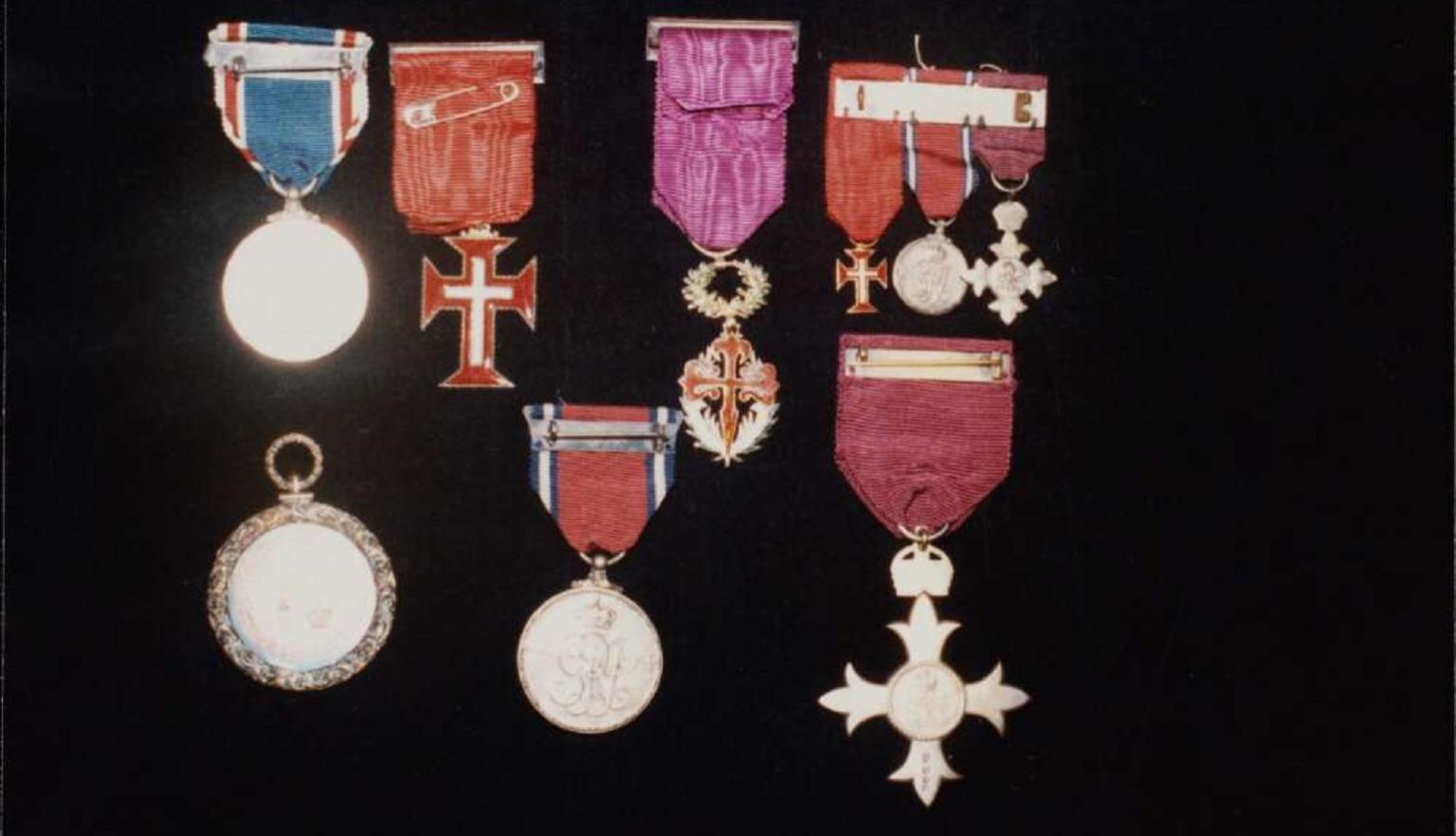Braga Collection
Collection highlights
Key items in the collection
This collection hosts a range of formats, including:
There are 198 manuscripts, primarily handwritten or typed copies of books, articles, letters, and official documents. Many of these records come from Portuguese missions in Asia, dating from the sixteenth to eighteenth centuries. The largest group, ‘Jesuitas na Asia’ (MS 4498), consists of transcripts of hundreds of letters from the Ajuda Library in Lisbon, alongside materials gathered from libraries and archives in Portugal, Spain, Italy, the Vatican, Britain, Goa, and Macau.
Additionally, the collection contains bound typescripts of Portuguese translations and writings by historian C.R. Boxer. Among the original manuscripts, the oldest is a fifteenth-century codex from the Cistercian Abbey at Alcobaca. Other notable items include sermons by Bishop Pedroso Guimaraes, medical prescriptions, an album about the Camões Grotto in Macau (c. 1850–80), and reports from the Macau Government from the 1940s.
There are 310 maps, mostly focusing on Macau, Hong Kong, and southern China, with the majority from the twentieth century. These maps include British Admiralty charts, topographical maps from the U.S. War Office, and materials from the Hong Kong Public Works Department, along with tourist maps. Notable older maps in the collection include:
- Edward Belcher, Canton and its approaches, Macao and Hong Kong, London, 1852
- Jacques Bellin, Plan de la ville et du port de Macao, Paris, 1764
- William Bernard, East Coast of China from Canton to Nanking, London, 1846
- Joan Blaeu, Tartaria sive Magni Chami Imperium, Amsterdam, 1662
- Richard Blome, A new mapp of y Empire of China, London, 1669
- Emanuel Bowen, A new and accurate map of China, London, 1747
- W.H. Hall, Chart showing the tracks of the Nemesis, London, 1846
- John Speed,A newe mape of Tartary, London, 1676
- Simeone Volonteri, Map of the San-On district (Kwantung Province), Leipzig, 1866
There are around 160 paintings, drawings, sketches, and prints, mostly depicting scenes from nineteenth-century Macau, Hong Kong, and China, along with historical and religious themes. Notable artists include Marciana Baptista, M. Bruce, George Chinnery, E. Hildebrandt, R.P. Leitch, Vicente Pacia, George Smirnoff, and Charles Hamilton Smith. Among them are two original works by Chinnery: a watercolor and a pencil self-portrait.
The collection also holds 4,220 photographs, covering similar subjects. These include many images of old Macau and Hong Kong from the mid-nineteenth century, as well as photos documenting Hong Kong’s post-World War II growth. There are also portraits of governors and officials, along with travel photographs from Europe, the Middle East, and Australia.
Braga's personal papers are extensive, encompassing family and business correspondence, research materials, lectures, articles, bibliographies, translations, newspaper clippings, photographs, postcards, and publications. They include documents from his father, José Pedro Braga, as well as a rich collection of family photographs dating back to around 1880. Among the bibliographies, the most significant is a comprehensive bio-bibliography that Braga developed over many years, totaling over 8,000 sheets and detailing works related to Portuguese and European activities in the Far East. Another notable piece is Braga's translation of “Asia Extrema” by Fr. Antonio Gouveia (1644), with the original housed in the Biblioteca da Academia da História in Madrid.
The Braga Collection includes around 7,400 books and pamphlets, mostly in English or Portuguese. The collection focuses on history, particularly the histories of Portugal, its colonies, China, and Japan. It also covers topics like European history, literature (English and Portuguese), Luis de Camões, Portuguese maritime exploration, European travelers in India and the Far East, Catholic missions in China and Japan, Chinese art, international relations, shipping, and places like Macau, Hong Kong, Timor, Goa, and Brazil. Other subjects include biographies, library catalogues, dictionaries, and encyclopedias.
While most of the collection dates from the late 19th and early 20th centuries, about 50 items are from before 1800, with the oldest being from 1489. Some notable and rare works include:
- Arquivo português oriental (10 vols, 1936–40)
- Saint Augustine, De civitate Dei (1489)
- Cosimo Bartoli, Discorsi historici universali (1569)
- Luis de Camões, Os Lusiadas (1878)
- Annibal Caro, De le lettere familiari del commendatore (2 vols, 1574–75)
- Alberto Correia, História da colonizacao portuguesa na India (7 vols, 1948–58)
- Armando Cortesão, Cartografia e cartógrafos portugueses dos séculos XV e XVI (2 vols, 1935)
- Manuel de Faria e Sousa, Asia Portuguesa (3 vols, 1666?–1703)
- James Forbes, Oriental memoirs (4 vols, 1813)
- Jordão Apollinario de Freitas, Macau: materiaes para a sua historia no seculo XVI (1910)
- Juan Gonzalez de Mondoza, Nova et succincta, vera tamen historia de … regno China (1589)
- História da expansão portuguesa no mundo (3 vols, 1937–40)
- Ignatius of Loyola, Exercitia spiritualia b.p. Ignatii Loyolae (1606)
- Charles Le Gobien, Istoria dell’editto dell’imperatore della Cina, in favore della religione Cristiana (1699)
- Arnoldus Montanus, Atlas japannensis (1670)
- Monumenta Henricina (7 vols, 1960–67)
- Garcia d’Orta, Due libri dell’historia de i semplici, aromati, et altre cose (1582)
- Antonio da Silva Rego, Documentacão para a história das missões do Padroado Português do Oriente: India (12 vols, 1947–58)
- Francisco Rodrigues, História da Companhia de Jesus na Assistência de Portugal (4 vols in 7, 1931–50)
- Francisco Simam da Graca, Sermam do patriarcha S. Francisco (1672)
- Domingos Teixeira, Vida de Gomes Freyre da Andrada (2 vols, 1724–27).
A legacy of history and scholarship
Early life and career
Born in Hong Kong in 1897, José Maria attended St Joseph’s College. He joined the Hong Kong & Shanghai Banking Corporation in 1913 and relocated to Macau in 1922. There, he taught for 13 years and played a key role in launching Macau's first daily newspaper, Diario de Macau, in 1925. He also served as the Reuters representative from 1932 to 1945 and contributed to various publications, including the Macao Review.
Passion for history
After moving to Macau, Braga dedicated himself to documenting its history, building a large library and creating files on officials and events dating back to the Portuguese arrival in the sixteenth century. He wrote numerous historical articles in both English and Portuguese and began collaborating with historian C.R. Boxer in 1937. During World War II, he focused on collecting records of wartime Macau and Hong Kong.
Scholarly contributions
Following the war, Braga shifted his focus from journalism to scholarly work. He authored several papers, including The Beginnings of Printing in Macao (1963), and compiled extensive bibliographies for Hong Kong’s annual report. His passion for history led him to gather important manuscripts in Portugal, including the ‘Jesuitas na Asia’ collection.
Later life
In 1966, Braga moved to New York to pursue business but faced challenges. In 1968, he relocated to Canberra to be reunited with his collection and, in 1972, he and his wife joined their daughter in San Francisco, where they spent the rest of their lives, continuing to nurture his love for history.
Background to the collection
The Braga Collection was bought from Braga in 1966. He was a fellow at the library from 1968 to 1971. Before he left, he donated additional books, manuscripts, artwork, and personal papers.
The books, pamphlets, and periodicals in the Braga Collection are kept together as part of the Asian Collections and are catalogued individually. You can identify them by the call numbers that start with BRA, BRAq, or BRA pam. The newspapers from this collection are part of the Newspapers Collection./p>
The manuscripts are stored in the Manuscripts Collection under the numbers MS 4301–4498 and have also been individually catalogued. The personal papers are in the Manuscripts Collection at MS 4300, use the papers finding aid.
The maps are kept as a group within the Maps Collection and can be found under MAP Braga Collection Col. /1-148. Some rare maps have been catalogued individually, and a full list is available in the Maps Reading Room. Many maps have also been digitised and are accessible online.
Paintings and drawings from the collection are housed in various locations within the Pictures Collection. Most are catalogued individually, and a few have been digitised and are available on the website. Photographs are also part of the Pictures Collection and are catalogued at the collection level.
This guide was prepared using these references:
- Stuart Braga, Jack Braga: the man and his collection, Unbound, Dec. 2016, online
- Stuart Braga, The last colony: the Portuguese in Macau, National Library of Australia News, vol. 14 (9), June 2004, pp. 7–10.
- Pauline Haldane, The Portuguese in Asia and the Far East: the Braga Collection in the National Library of Australia, National Library of Australia, Canberra, 1984






